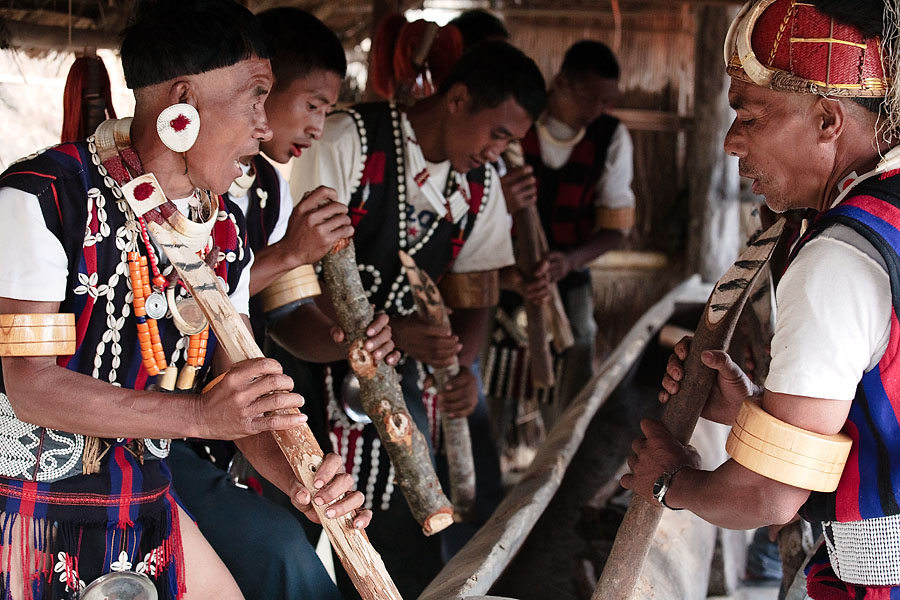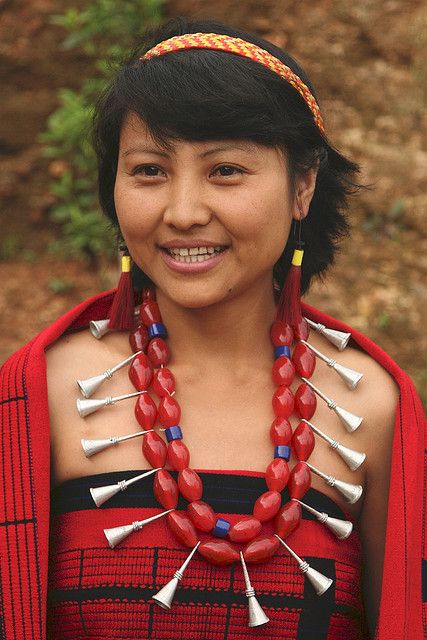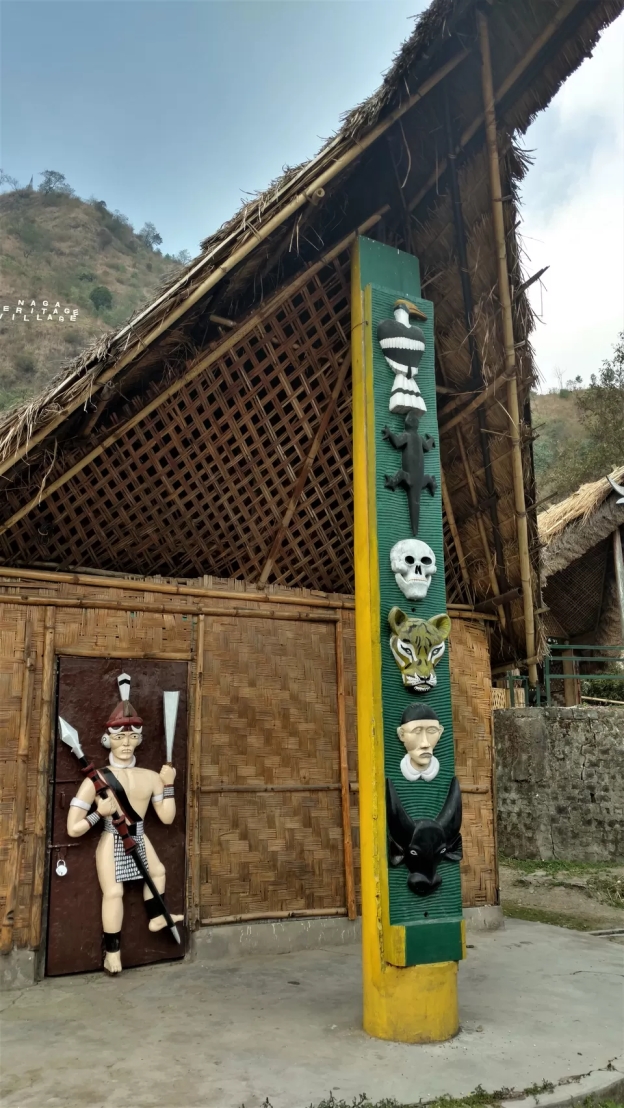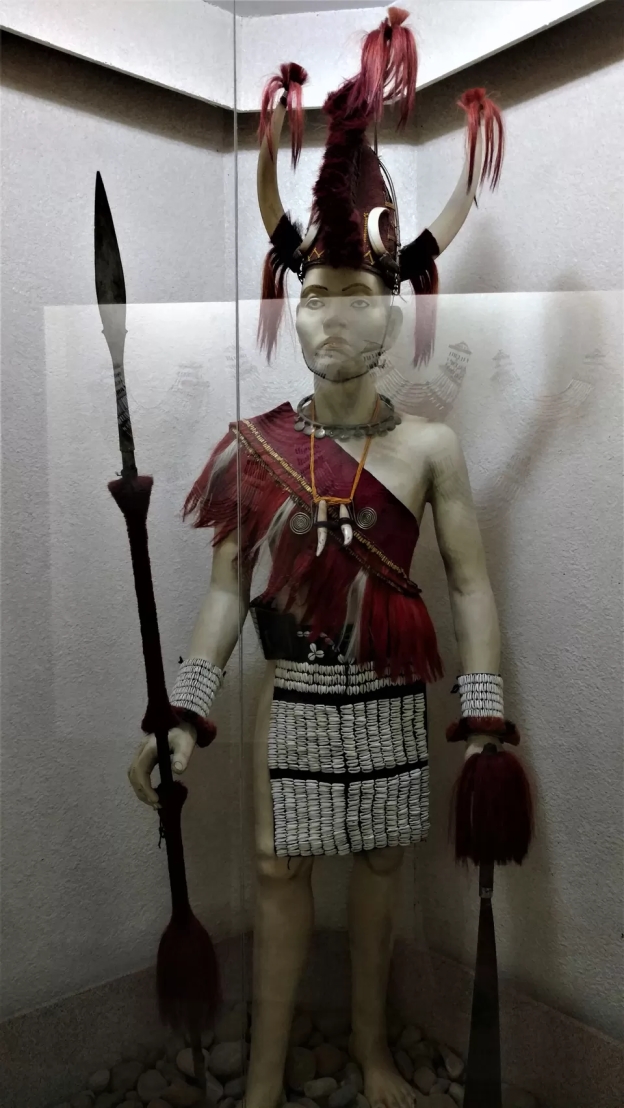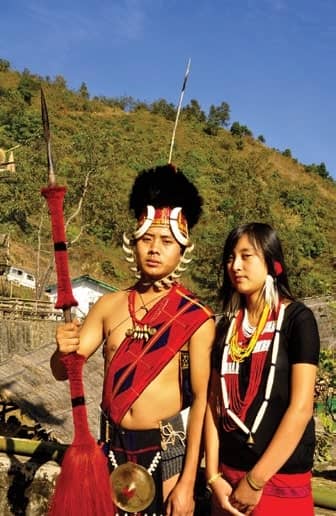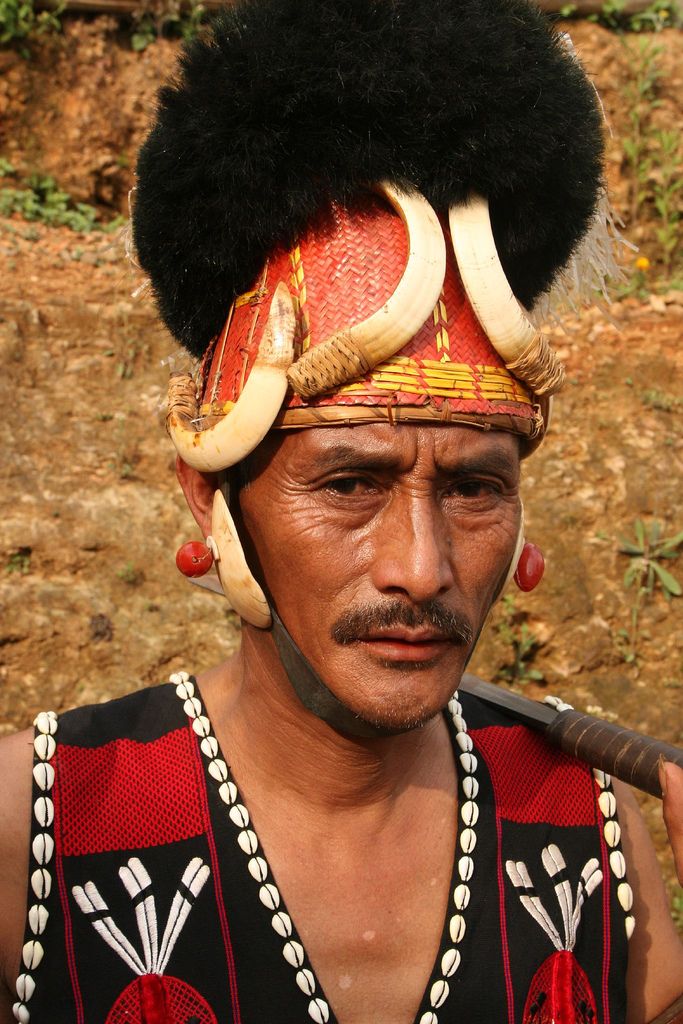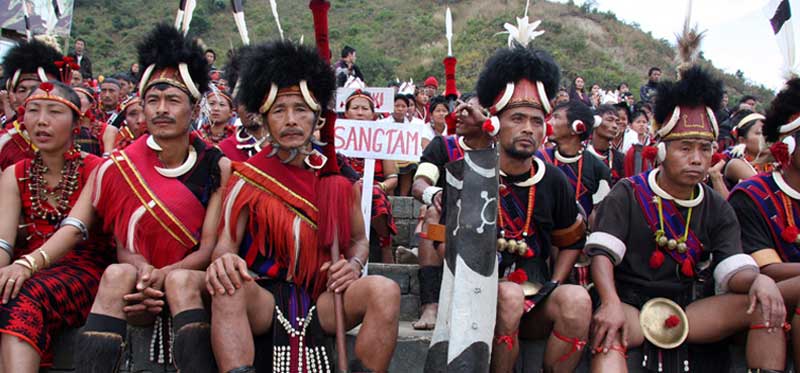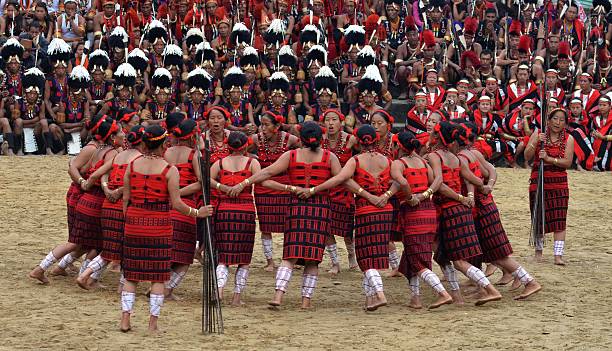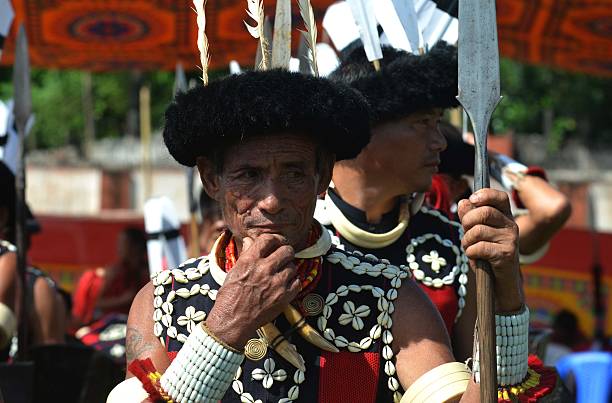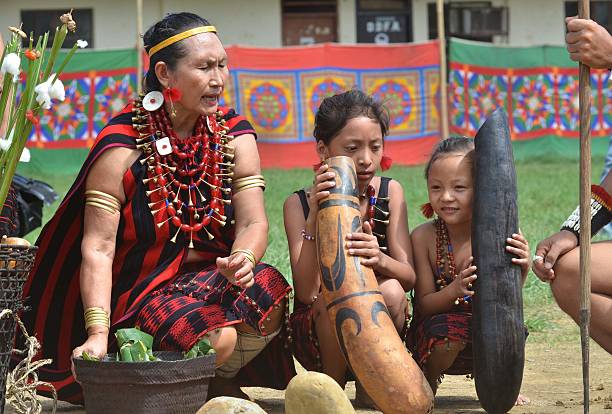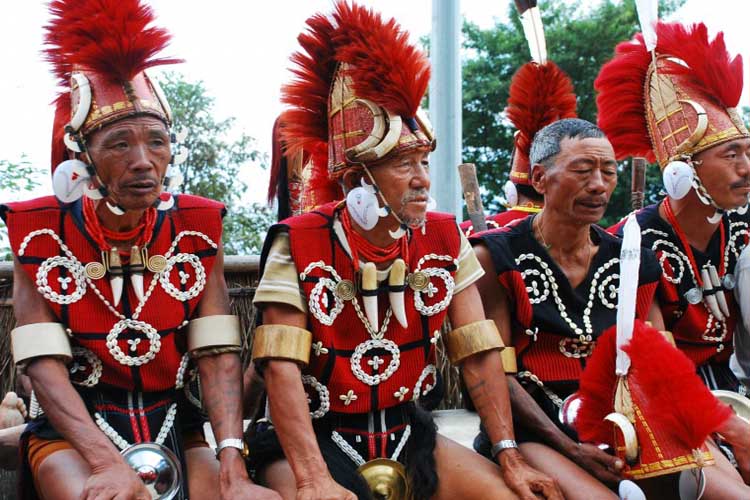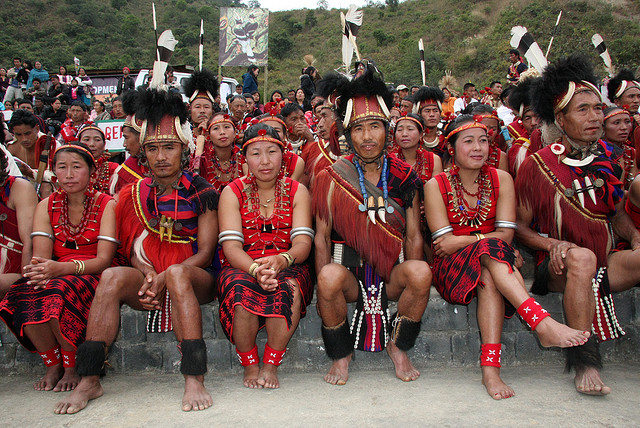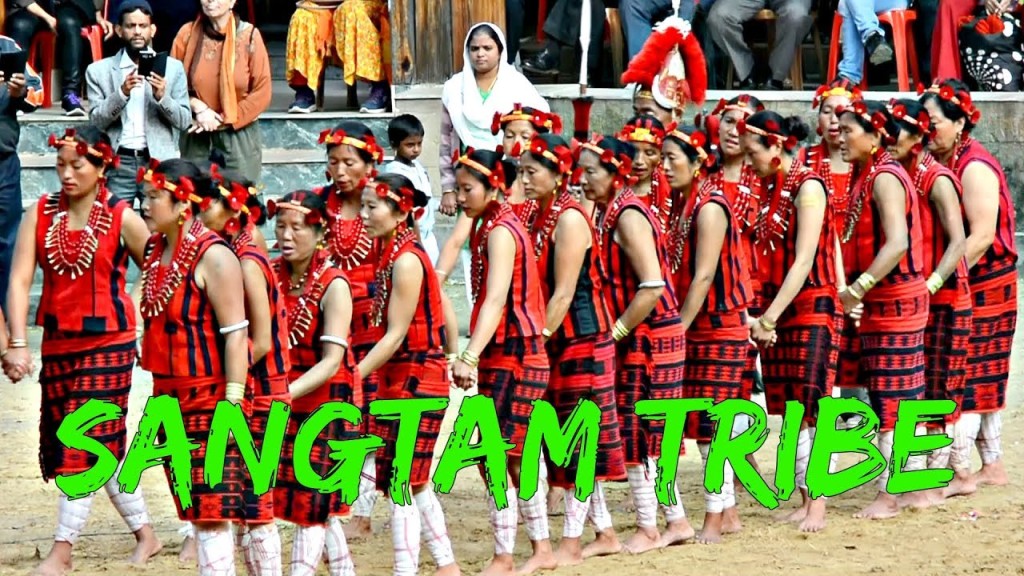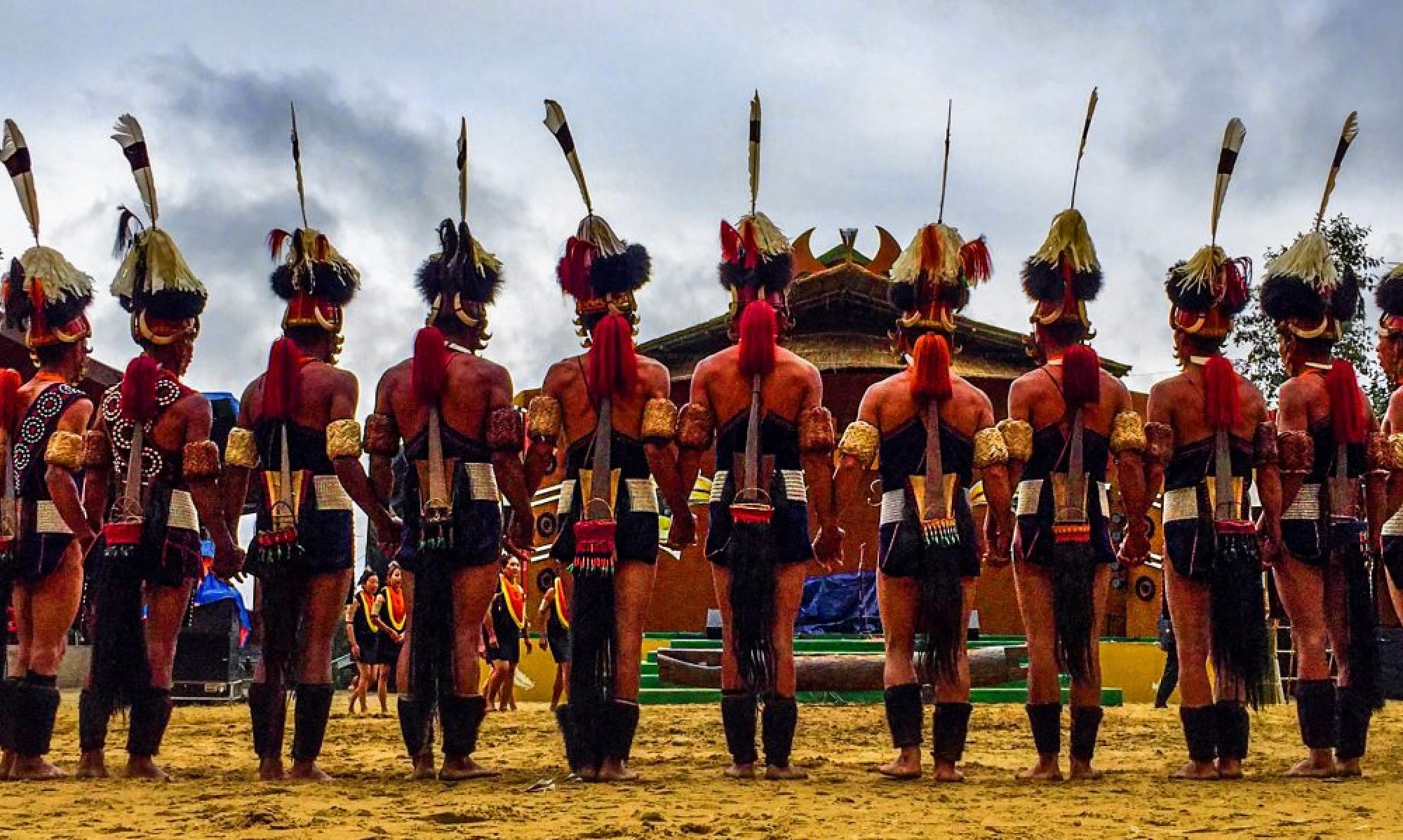
The Sangtam people, also known as the Sangtam Naga, are a Tibeto-Burman major Naga ethnic group native to the Kiphire District in the Northeast Indian state of Nagaland. Like many other ethnic groups in Northeast India, they practice jhum, or shifting cultivation. Unlike other Naga ethnic groups in Nagaland, many of the Sangtam have retained their traditional beliefs in spite of embracing Christianity at the same time. Sangtams celebrate twelve different festivals, in particular Mungmung, all of which are affiliated with their traditional culture and religion. The Sangtam people are one of the major ethnic groups in Nagaland. Towards the Southern part of Nagaland, we have the Sangtam inhabited area under the Kiphire District. The Northern part of Sangtam includes the Longkhim-Chare sub-division of Tuensang District. They are united under the common banner called “United Sangtam.” There are 62 (sixty two) villages among the Sangtams, 24 villages under Longkhim-Chare sub-division and 38 villages under Kiphire District. There are seven government administrative towns under united Sangtam jurisdiction. During the recent years, another part of Sangtam land has been recognized namely Tsithrongse and Mürise Village under Chümoukedima District and Sangtamtilla Village under Dimapur District.
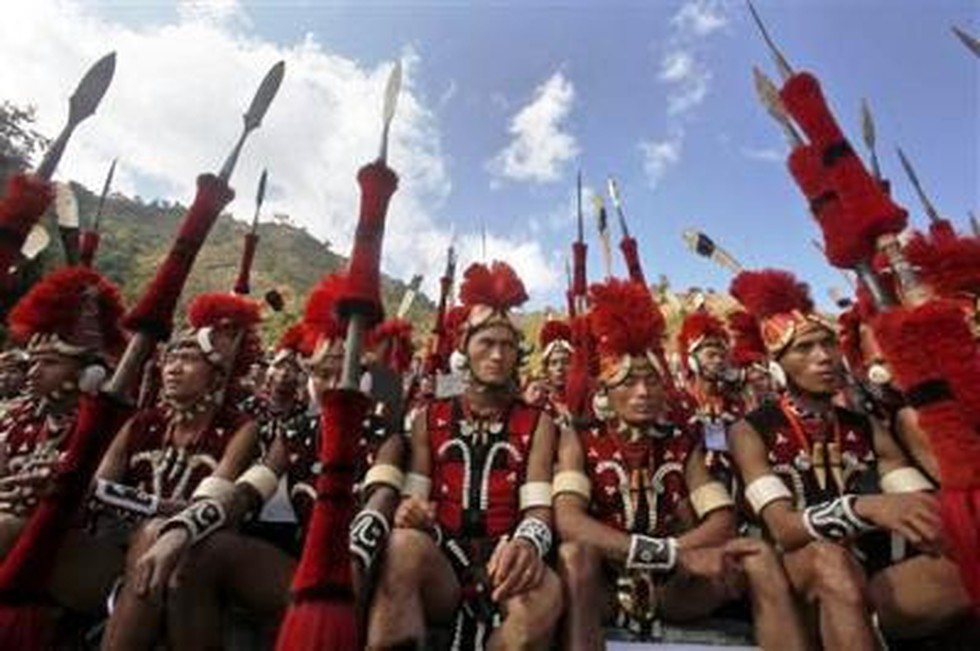
As per oral history handed down through generation, Sangtams were also among the first group of people (now Nagas) who were brought from Mongolia to China and deployed in the construction of the Great Wall of China. To differentiate this group from the mainland Chinese, their ears were pierced. But due to hardship faced at the construction site, the group of Nagas left the work site and migrated south towards Burma (Myanmar) and settled at Maikhel. From Maikhel, some of the Nagas migrated and finally settled at present day Khezhakhenoma. From Khezhakhenoma, the Sangtams again migrated to Shukumükoh, Mütsali and again moved to a place called Khuza, but they did not stay long and a splinter group moved up the Kihrü (Tizu) river and settled at a place called Jutruhungnyang. The other group did not cross the river but moved westwards settling in Kilorü, Tukunasa and finally settled at Ningneng(Nunumi) village. Due to certain social disturbances the Sangtams could not continue to settle in this village and further splintered to two groups. One group migrated to the East and finally settled at Yangthrü(Thsinga) and the other group moved northwards and finally settled at Hurong village (now abandoned and located near New Tsadang village).
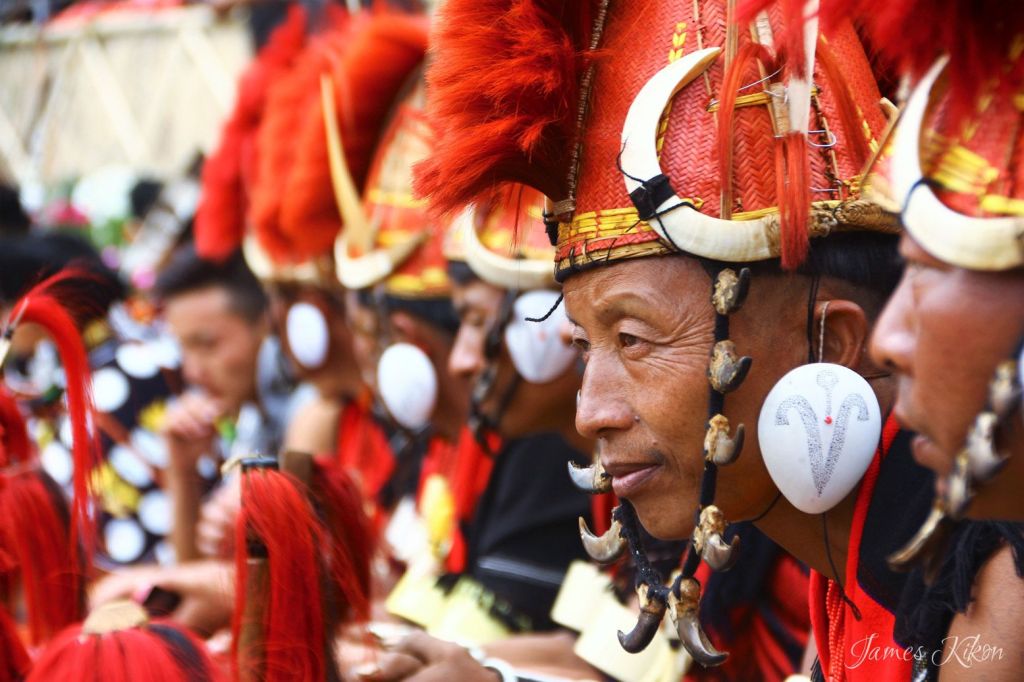
Northern Sangtam, an essentially undescribed Tibeto-Burman language of central Nagaland belonging to the Aoic subgroup. It is a noteworthy language from a number of phonological perspectives, not least because its phoneme inventory contains two of the world’s rarest phonemes: a pre-stopped bilabial trill, and a doubly-articulated labial-coronal nasal. These unique segments are described in detail, and an attempt is made to determine how they might have developed their phonemic status. The tone system is also of interest, as it demonstrates evidence of debuccalization resulting in the development of a new high tone. Following a systematic description of the syllable and word structure, the tone system, and the segmental phonology, some observed age-related differences in the phoneme inventory are discussed. The paper is linked to an online repository containing the audio-visual data and transcribed word lists of approximately 900 items, based on the recorded utterances of eight speakers.
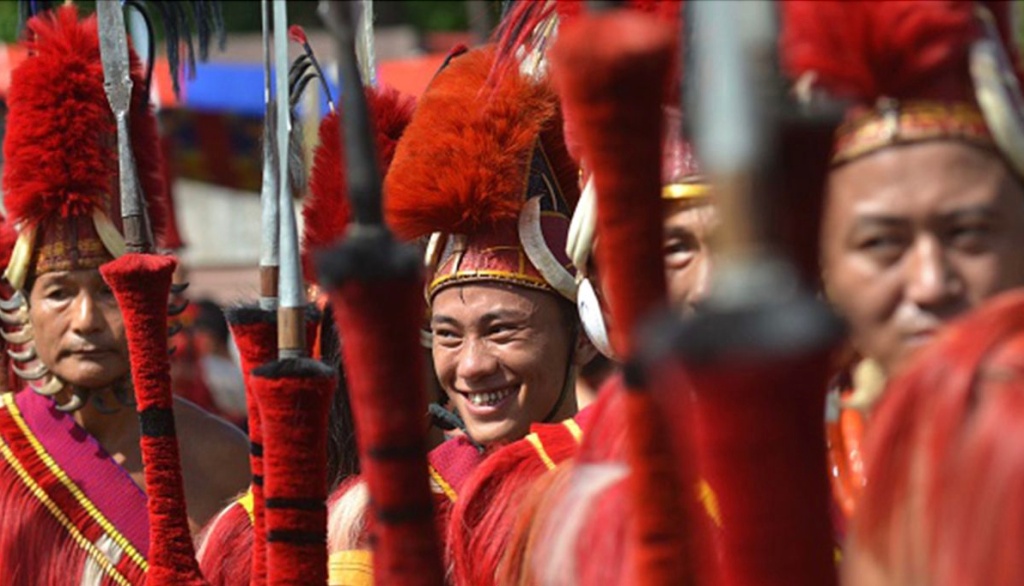
The Sangtam tribe belongs to the Tuensang district in eastern Nagaland. Tuensang is located in the eastern part of Nagaland. It is bounded by Mon and Longleng Districts in the north and north east respectively, Mokokchung in the northwest, Zunheboto in the southwest, Kiphire in the south, and Myanmar in the east. The most common practice of agriculture is Jhum-Shifting cultivation. The main crops are Rice Maize, Millet, Kholar bean etc. During the 1870-1880’s the British survey team led by Woodthrope first entered the Northern Sangtam territory. When the Britishers asked the people about their tribe, they replied that they are the people who migrated from Sangdang (now Satami under Zunheboto District) which was their ancestral village. Thus the word Sangdang was interpreted as Sangtam by the Britishers. As per the oral history, it may be mentioned that the name Sangdang village was derived from a traditional practice by the people, who use to live in elevated platform house called Sangdang meaning platform. As per oral history handed down through generation, Sangtams were also among the first group of people (now Nagas) who were brought from Mongolia to China and deployed in the construction of the Great Wall of China. –they then migrated to Myanmar and Nagaland.

The Sangtam people offer their due respects and prayers once the seeds sown in their fertile lands begin to nurture and grow. The prayers are for a very thriving cultivation. Mongmong festival distinguishes the dead from the living. The separation of the two is the true essence of the festival. The religious advocate in charge of the district known as Beburu, recites a certain rite twice. Recitation of the prayer is done once in the evening and once in the morning. The Morning Prayer is considered rather more powerful and brings prosperity. Whereas, the prayer constituted in the evening is forged for the banishment of evil spirits that linger around their lands and proliferate bad vibes. Nagaland is lush with diverse culture and grandiloquent tribes. The precise definition of the word ‘Momgmong’ can be interpreted as ‘everlasting unity’. From the seventeen tribes in Nagaland, the Sangtam is a major tribe of North East India. The Sangtam tribes ares fluent in expressing their beliefs and culture. Their culture is depicted in the practice of their many rituals and ceremonies. Their ancient music and folk dance also speak of their unique ethnicity. All together, a total of twelve festivals are acknowledged by the Sangtam tribe of which Mongmong festival is heeded with most importance and pride. Significantly, the festival is celebrated in its entire splendor. Most of the people belonging to the Sangtam tribe originate from parts of Kiphire district in Nagaland. Being a widely acclaimed tribe of the state signs the Mongmong festival as one of the popular festivals of Nagaland. The festival with its element of amusement contributes to the flourishing tourism of Nagaland. The attention of the festival is highly centered on the subject matter of harvest. The festival is observed through the practice of worshiping God for all his gifts in the trajectory of life. The entire district is employed in the course of the holidays to prepare for this festival which incorporates ritualistic ceremonies and feasting.
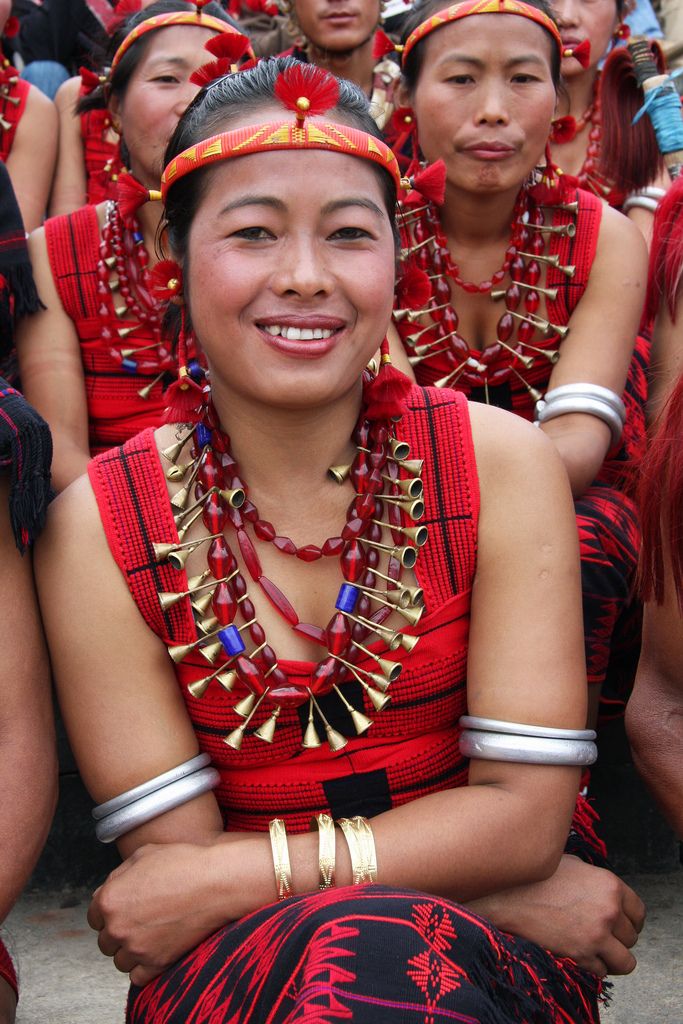
It has become customary to label the Assam-Burma border as a “well-documented region” : among the several tribes concerning whose ethnography virtually nothing has been recorded are the Sangtam Nagas who comprise a small, but well-defined tribal unit in the eastern area of the Naga Hills. The tribe is composed of two geographical separated sections, both of which have as an integral part of their social system the remarkable institution of the Feast of Merit, already described for other Naga tribes in the series of monographs on the hills peoples of Assam. During a visit to the northern section of the tribe in December 1947 I had the good fortune to witness the performance of the culminating feast of the series, and was able to obtain information on the main features of the remainder. At this, and at all subsequent feasts the giver is helped by two ritual friends known as shyangrr myangrr. They need not belong to his clan or village, and are in the nature of ” bond friends “. They receive a liberal share of the sacrificial meat, and each has a reciprocal obligation to choose the feaster as one of his shyangrr myangrr at the next sacrifice he performs. The feast lasts one day and the pigs are killed in front of the feaster’s house by an old man of the clan, who dispatches them with a spear. A sacred fire is lit at the spot, from embers of a special fire previously kindled inside the feaster’s house for brewing beer. Further details of this are given below. No dance is held.
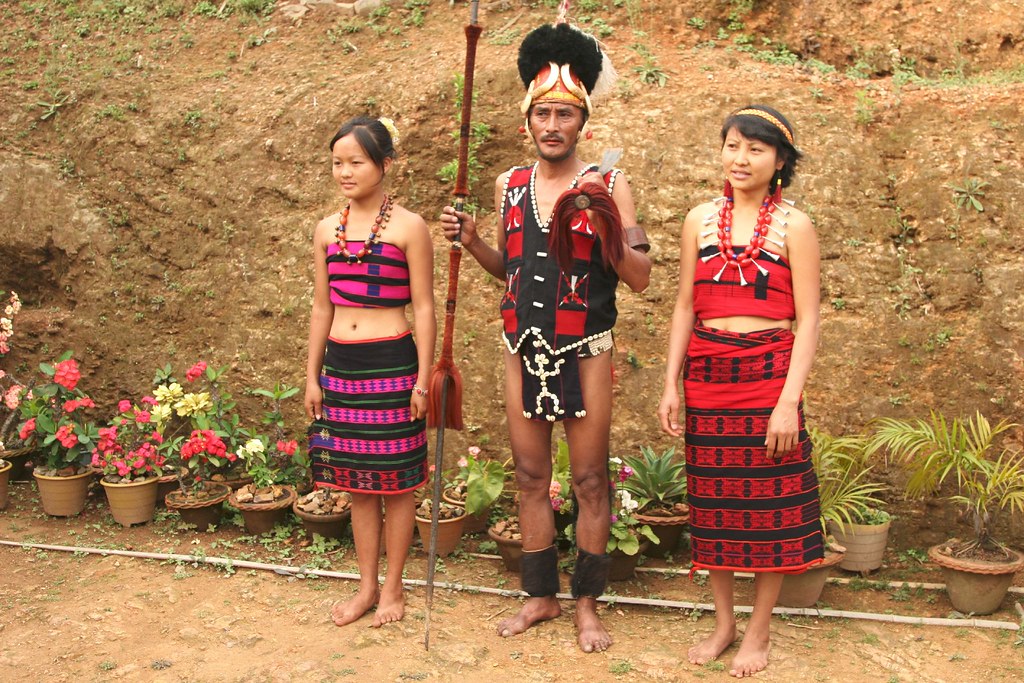
MONGMONG
After toiling for several months during the year and when the crops are ripened for harvest, the green signal to start of the celebration of mongmong festival is given by the village priest called “BEBURU” with due prayers and rites. At dead of the night the priest will announce/proclaim that” ZANGNYUO MONGMONG NUNG EH-LEHE”. The next morning another priest will repeat the proclamation. Then the villagers will begin preparation for the festival by accumulating foodstuffs, firewood and special wine like Rohi and Madhu etc. The announcement made in the morning is the correct information. The proxy announcement made at dead of the night denotes separation of the spirit of the dead from the living during Mongmong festival. Also nobody would like to inherit the sins of the dead and any kind of sinful deeds. Thus through Mongmong festival a line is drawn between the dead and the living. At this, and at all subsequent feasts the giver is helped by two ritual friends known as shyangrr myangrr. They need not belong to his clan or village, and are in the nature of ” bond friends “. They receive a liberal share of the sacrificial meat, and each has a reciprocal obligation to choose the feaster as one of his shyangrr myangrr at the next sacrifice he performs. The feast lasts one day and the pigs are killed in front of the feaster’s house by an old man of the clan, who dispatches them with a spear. A sacred fire is lit at the spot, from embers of a special fire previously kindled inside the feaster’s house for brewing beer. Further details of this are given below. No dance is held.
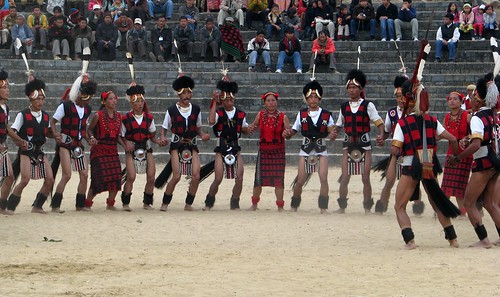
The Sangtams inhabit the Southeastern part of the Tuensang district of Nagaland having a population of 42,886 (2001 Census). They belong to the language of the Tibeto-Burman family. With the help of American Baptist Missionaries and neighboring tribes, they received the Gospel sometime in the early part of the 20th century. Like other Naga tribes, when they received the Gospel, headhunting was still practiced. Because of the lethargy of fear the spread of Christianity was a bit slow. However, after two decades, believers increased gradually, but there was no leadership during those days because there were only a few literates. The majority of people could not read or write. Because of such problems and difficulties, they decided to join the Ao Baptist Churches Association (ABAM) which was the most advanced and well-organized association. This lasted for more than 27 years. But with the improvement of literacy rate and able leadership, they formed their own association in 1946. The forming of new associations enhanced literacy too as education along with evangelism was given the main priority. This new initiative proved to be the vital force in winning many souls to Christ. Today almost the whole Sangtam tribe are Christians. Initially, the Bible Society had published some portions of the Bible some decade ago, and subsequently the Sangtam Naga Bible was published in 1995. It is noteworthy that the Sangtam Bible was considered to be the first book of literature and grammar for the Sangtams. This indicates that the scripture can serve as normative both for spiritual growth and literature development as well.
